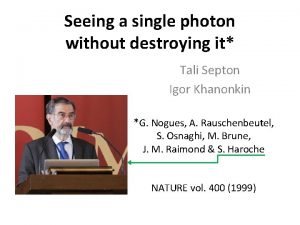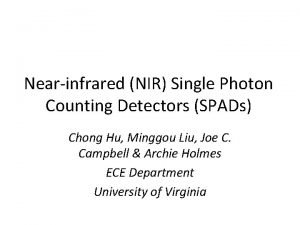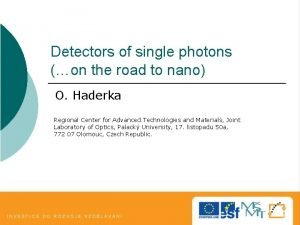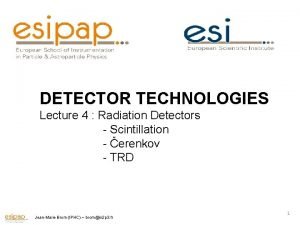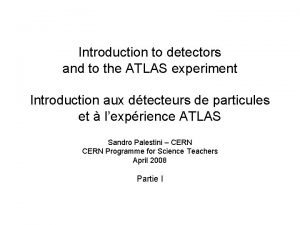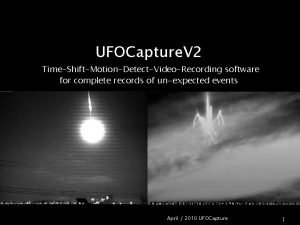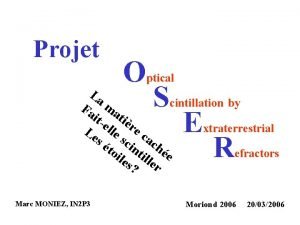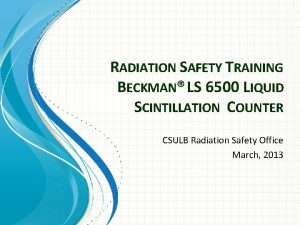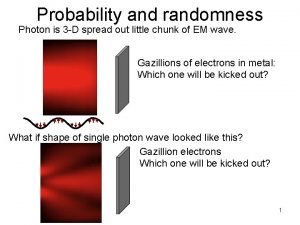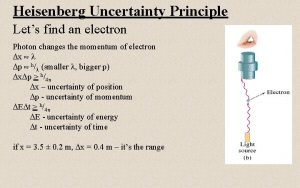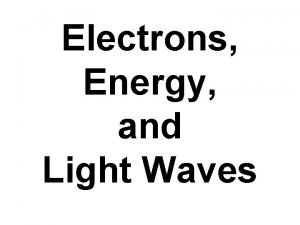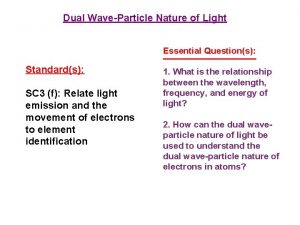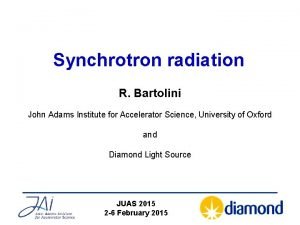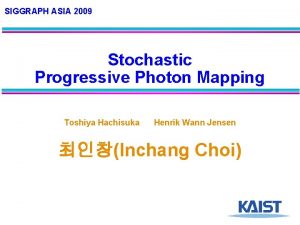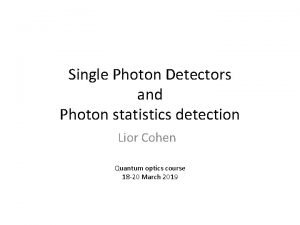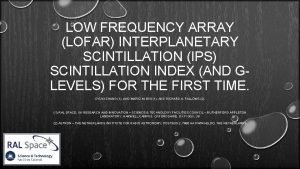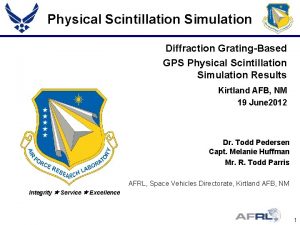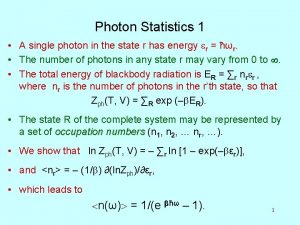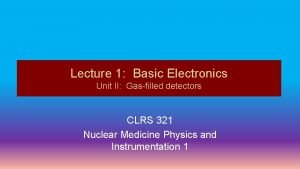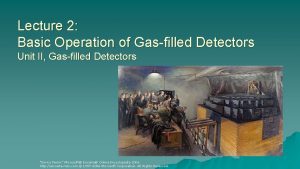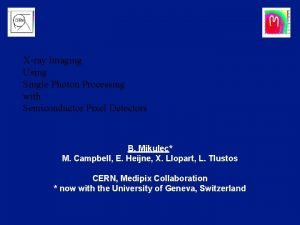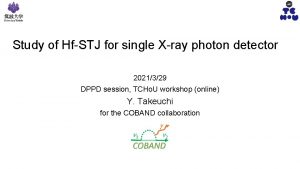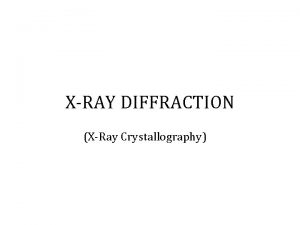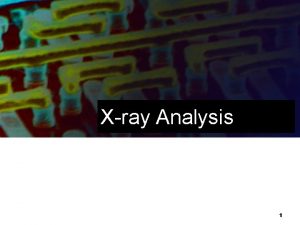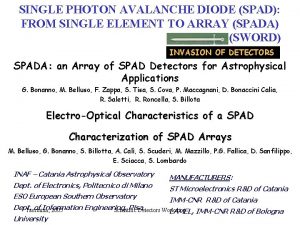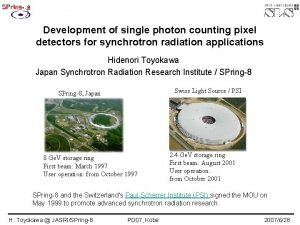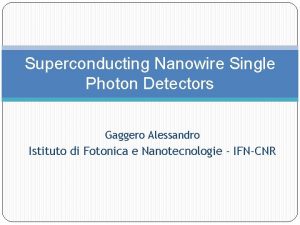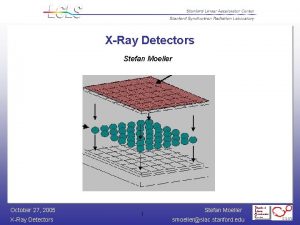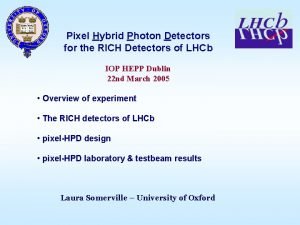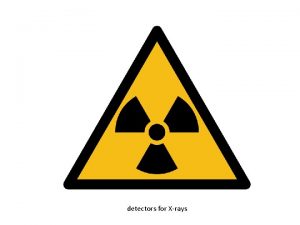Xray detectors single photon detectors scintillation detectors gasfilled



















- Slides: 19

X-ray detectors • single photon detectors – scintillation detectors – (gas-filled) proportional counters – semiconductor detectors • linear (position-sensitive) detectors – gas-filled (wire) detectors – charge-coupled devices (CCD’s) • area detectors – 2 -D wire detectors – CCD area detectors • X-ray film

Gas-filled proportional counter A proportional counter consists of the following main components: • a gas-filled cylindrical envelope (usually Ar, Kr, or Xe) • a central anode wire Cullity (cathode at high voltage? ) • a grounded coaxial cylinder (the cathode) • an X-ray transparent window Klug & Alexander (grounded cathode)


Gas-filled proportional counter • When an X-ray photon ionizes a gas molecule, the ejected photoelectrons are accelerated to the anode – low voltages – photoelectrons don’t have enough energy to ionize other molecules – intermediate voltages – gas amplification occurs (photoelectrons ionize gas molecules on the way to the anode – high voltages – discharge occurs throughout the gas volume

The scintillation detector • most common detector in materials analysis by X-ray diffraction • the detector has two basic elements: – a crystal that fluoresces visible light (scintillates) when struck by X-ray photons – a photomultiplier tube (PMT) that converts the light to electrical pulses Na. I(Tl) scintillator (very sensitive to moisture) – emits around 4200Å Cs. Sb photocathode – ejects electrons gain ~5 per dynode (total gain with ten dynodes is 510 107)

Semiconductor detectors • Semiconductor detectors are solid-state proportional counters – each photon produces electron-hole (e/h) pairs • The detection of e/h pairs would not be possible if the semiconductor has free carriers (n-type or p-type) so it must be intrinsic – this can be done by “lithium drifting” p p n apply V heat p--Si Li+ n i Li+ lithium lightly p-doped Si has Li plated heat to have the Li diffuse apply a reverse bias to cause Li+ ions to “drift a wide central intrinsic region is formed

Random aspects of semiconductor detectors • originally: Si(Li) and Ge(Li) – “silly” and “jelly” • now intrinsic Si and intrinsic Ge are available (Ge better due to higher absorption and better energy resolution) • energy resolution about 2% • small signal requires a charge-sensitive preamp integrated with the detector • due to thermal e/h generation and noise in the preamp, cooling to 77 K is needed • new detectors use Si p-i-n photodiodes and large bandgap materials (Cd. Te and Cd. Zn. Te) for room-temperature operation

Random aspects of semiconductor detectors • originally: Si(Li) and Ge(Li) – “silly” and “jelly” • now intrinsic Si and intrinsic Ge are available (Ge better due to higher absorption and better energy resolution) • energy resolution about 2% • small signal requires a charge-sensitive preamp integrated with the detector • due to thermal e/h generation and noise in the preamp, cooling to 77 K is needed • new detectors use Si p-i-n photodiodes and large bandgap materials (Cd. Te and Cd. Zn. Te) for room-temperature operation

Diffractometer operation • The steps taken in diffractometer operation depends on whether the system is being used for powder analyses or single crystal analyses

Neutrons and electron diffraction Louis de Broglie: h=6. 62606896× 10− 34 J. s

X-ray Fluorescence Spectrometry (XRF)

Energy dispersive spectrometry schematic arrangement of EDX spectrometer


Wavelength dispersive spectrometry (WDS)


Crystals • • • The desirable characteristics of a diffraction crystal are: High diffraction intensity High dispersion Narrow diffracted peak width High peak-to-background Absence of interfering elements Low thermal coefficient of expansion Stability in air and on exposure to X-rays Ready availability Low cost

• Normally, the maximum achievable θ angle in a WDS system is about 73◦. Thus, the maximum λ of characteristic X-rays being diffracted is about 1. 9 d of the analyzing crystal.

• Crystals with simple structure tend to give the best diffraction performance. Crystals containing heavy atoms can diffract well, but also fluoresce themselves, causing interference. Crystals that are water-soluble, volatile or organic tend to give poor stability. • Commonly used crystal materials include Li. F (lithium fluoride), ADP (ammonium dihydrogen phosphate), Ge (germanium), graphite, In. Sb (indium antimonide), PE (tetrakis-(hydroxymethyl)-methane: penta-erythritol), KAP (potassium hydrogen phthalate), Rb. AP (rubidium hydrogen phthalate) and Tl. AP (thallium(I) hydrogen phthalate). In addition, there is an increasing use of "layered synthetic microstructures", which are "sandwich" structured materials comprising successive thick layers of low atomic number matrix, and monatomic layers of a heavy element. These can in principle be custommanufactured to diffract any desired long wavelength, and are used extensively for elements in the range Li to Mg.

 Single photon
Single photon Single photon
Single photon Photons
Photons Hpdcms
Hpdcms Scintillation liquide
Scintillation liquide Scintillation
Scintillation Scintillation
Scintillation Scintillation
Scintillation Beckman ls6500 liquid scintillation counter
Beckman ls6500 liquid scintillation counter Scintillation
Scintillation Desy photon science
Desy photon science Motion-to-photon latency
Motion-to-photon latency Photon chunk
Photon chunk Photon uncertainty principle
Photon uncertainty principle Energy planck's constant
Energy planck's constant What is meant by the dual wave particle nature of light
What is meant by the dual wave particle nature of light Synchrotron radiation
Synchrotron radiation Institut für kernphysik
Institut für kernphysik Stochastic progressive photon mapping
Stochastic progressive photon mapping Wavelength units
Wavelength units
